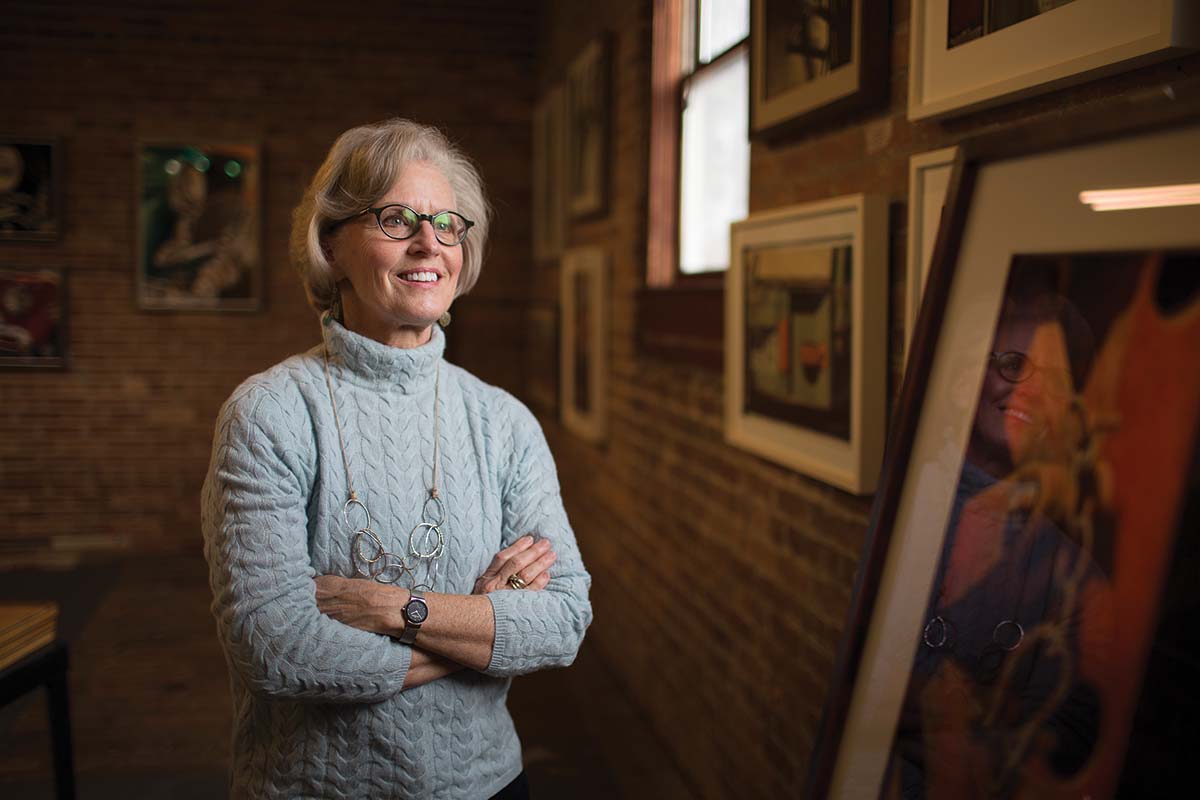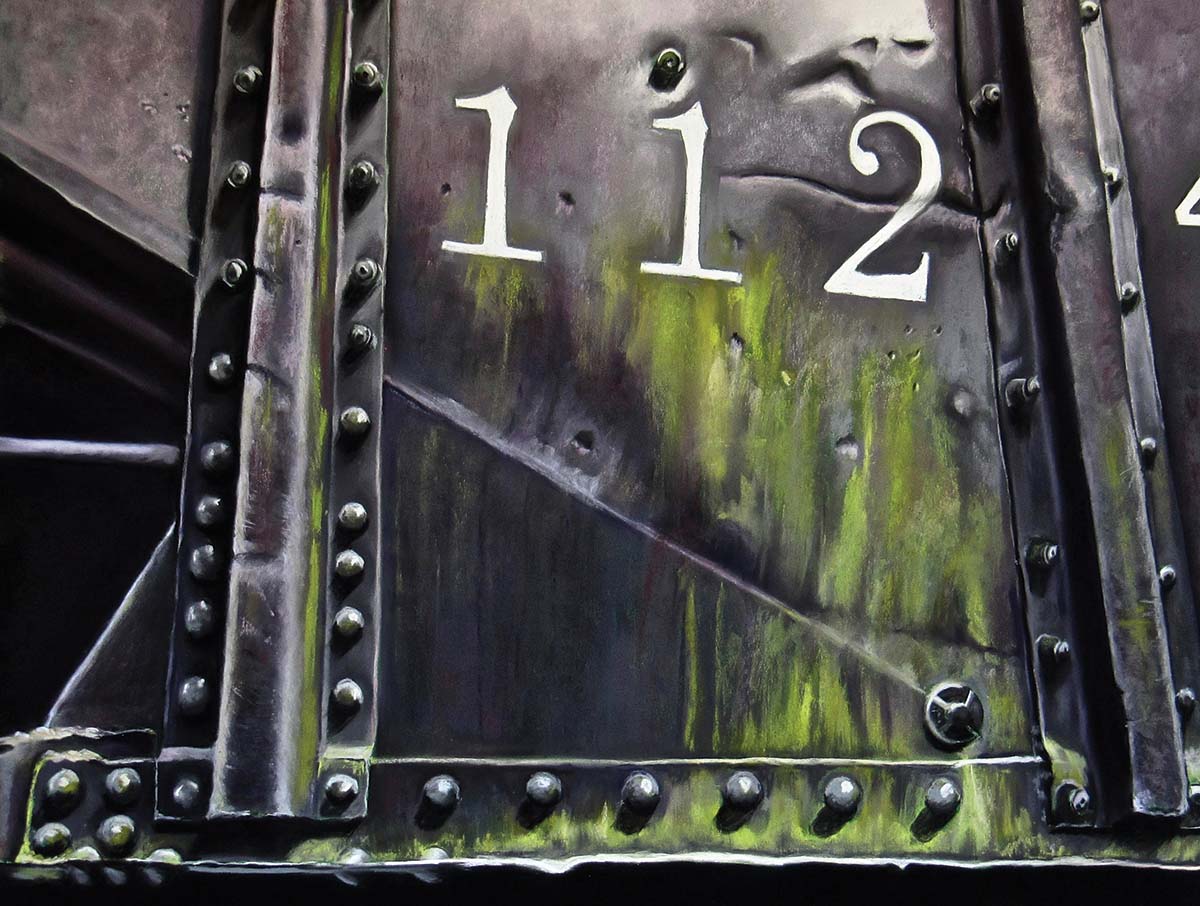
A big part of working as an architect used to be the preparation of highly detailed drawings, a skill that served Pamela Winkler well in her subsequent career as a pastel artist. Winkler is known both for the precision of her work and for her unusual subject matter for the medium — the built world of automobiles, machinery, and complex structure — manmade objects magnified “with a close look at how things are made and put together,” Winkler says.
Studying art history as an undergraduate before taking her Masters degree in architecture, Winkler was already comfortable with the colored pencils and markers she used in preparing conceptual drawings for her clients at an architectural firm in Cincinnati. “I often used hand drawings or would color a simple line drawing from a computer to give a more personal feel to the drawing,” she explains. (Today, 3D models are typically used for presentation.) After moving to Asheville nearly a dozen years ago, Winkler worked for a firm in Black Mountain. She left there to look for larger, nonresidential projects, but then came the economic collapse of 2008 and the ensuing downsizing that affected many corporate offices.

Finding herself temporarily unemployed, Winkler used the time to return to art studies, exploring ceramics and stone carving before finding herself in an eight-week workshop in pastels at Asheville-Buncombe Technical Community College. “I found the medium versatile and exciting, actually getting your fingers involved in the painting process,” she says. “Pastels satisfy all my creative urges.”
But while pastels are most often associated with gauzy landscapes or softly rendered portraiture, Winkler’s work is striking for its firm lines, assertive colors, and closely cropped framing. “I look predominantly for three things in a subject for a painting: color, texture, and a sculptural 3D quality,” she says. “The play of light is very important in accentuating the sculptural qualities and the texture. And since pastels are almost pure pigment with just a bit of binder to hold the pigment in stick form, they’re perfect for the bold colors I like.”
Working from her own photographs, Winkler looks for the unusual angle or most visually striking detail of her subject through zooming in, boosting color saturation, and other manipulations.

Then she turns to her easel. “I usually make changes as I feel necessary from the photograph as I paint,” she says. “Sometimes it’s removing the background to make an industrial object look more like a standalone sculpture. And always cropping to find the best composition.” The tactile appeal of her work is helped in part by her use of sandpaper, its rough surface allowing for more layering and deepening of color.
While most of her pieces are conventionally sized, perhaps two or three feet on their longer sides, Winkler has pushed the boundaries of pastels a bit further by scaling up the work to encompass diptychs or even triptychs — even though pastels necessarily must be framed under heavy, non-reflective glass for exhibition.
This adds considerably to the expense of transport and hanging. “They present new challenges,” she admits of these multiple-element works, “like where to make the divisions? Should the panels be the same size, or different sizes? Are the divisions in one direction, or both horizontal and vertical?” But she dives in anyway, even though “some issues aren’t realized until the painting is underway.”
But what’s most original about Winkler’s work is her near-metaphysical transformation of the mundane — oil tankers, a rusting padlock, metal gym lockers — into symbols of durability and quiet strength. The intimate parts of trains appear frequently, since all three of her studios, like her present one in Asheville’s River Arts District, have been near train tracks. Also figuring frequently, and not surprisingly, are architectural elements like stone cornices or the metal trusses of the Eiffel Tower.
“One point I hope to convey to viewers,” she says, “is that beauty can be found anywhere and everywhere, in all kinds of everyday, ordinary objects.”
Pamela Winkler, Warehouse Studios, 170 Lyman St. in the River Arts District, Asheville. Call or text for an appointment: 828-545-9025. For more information, see pamelawinkler.com.
